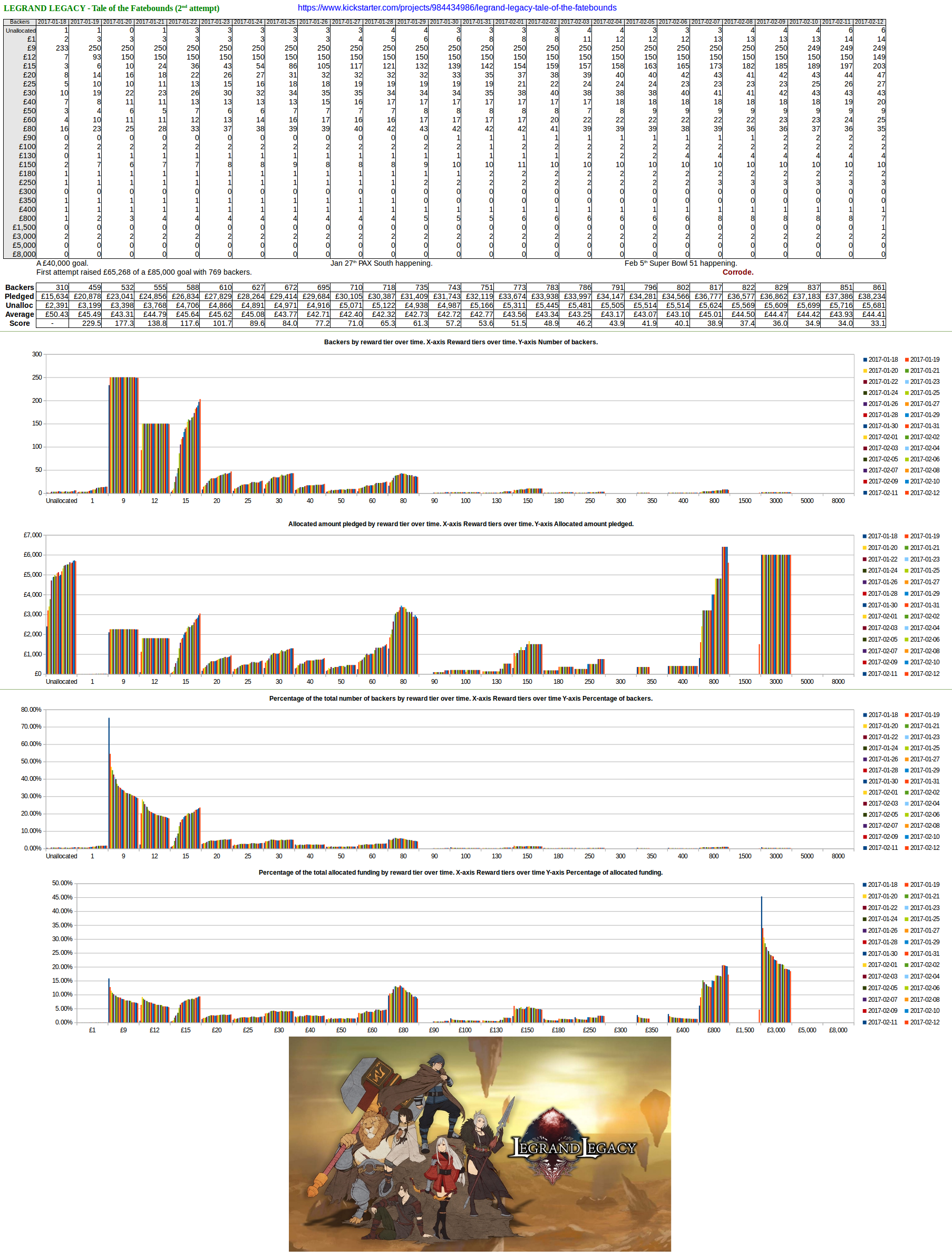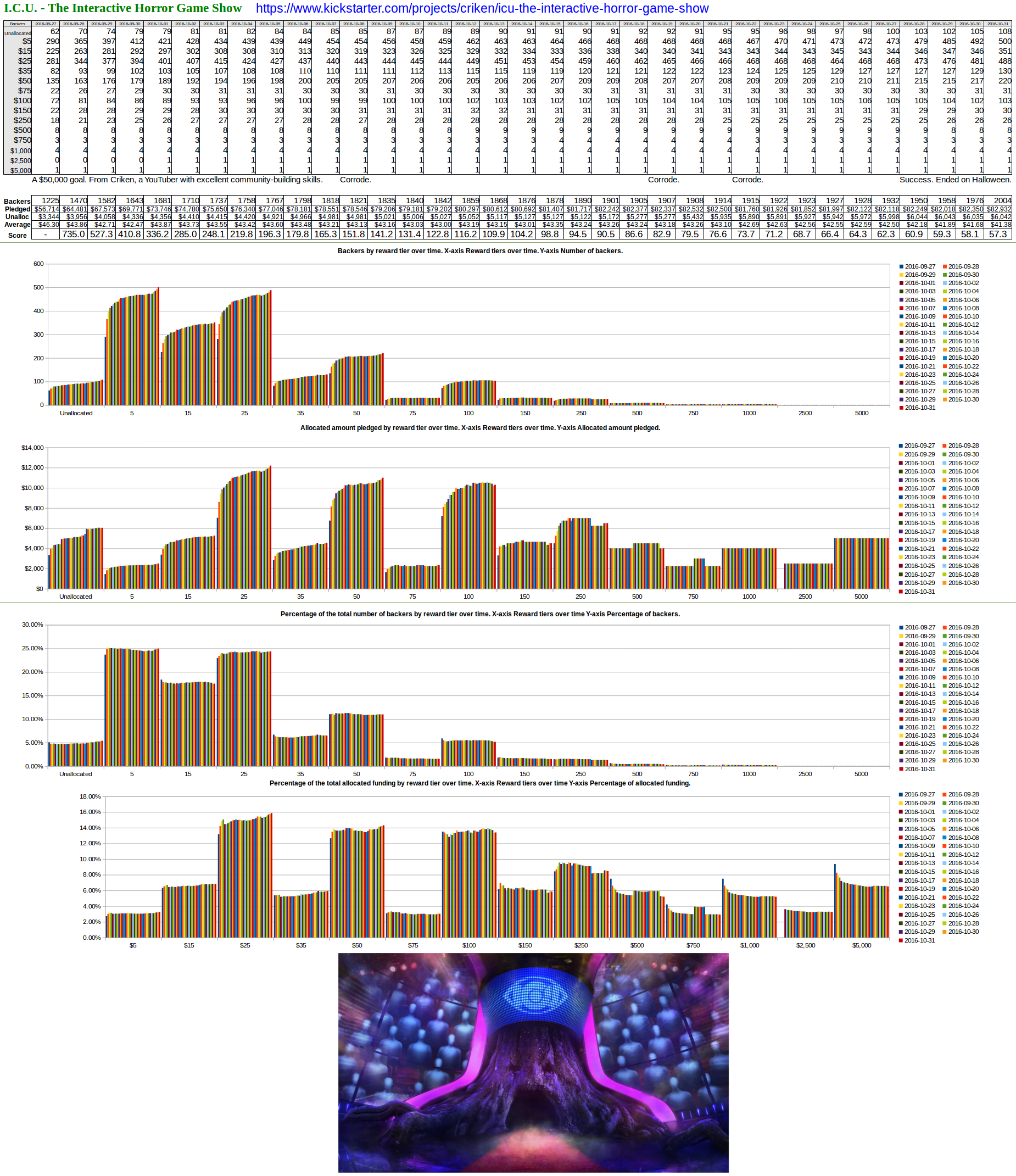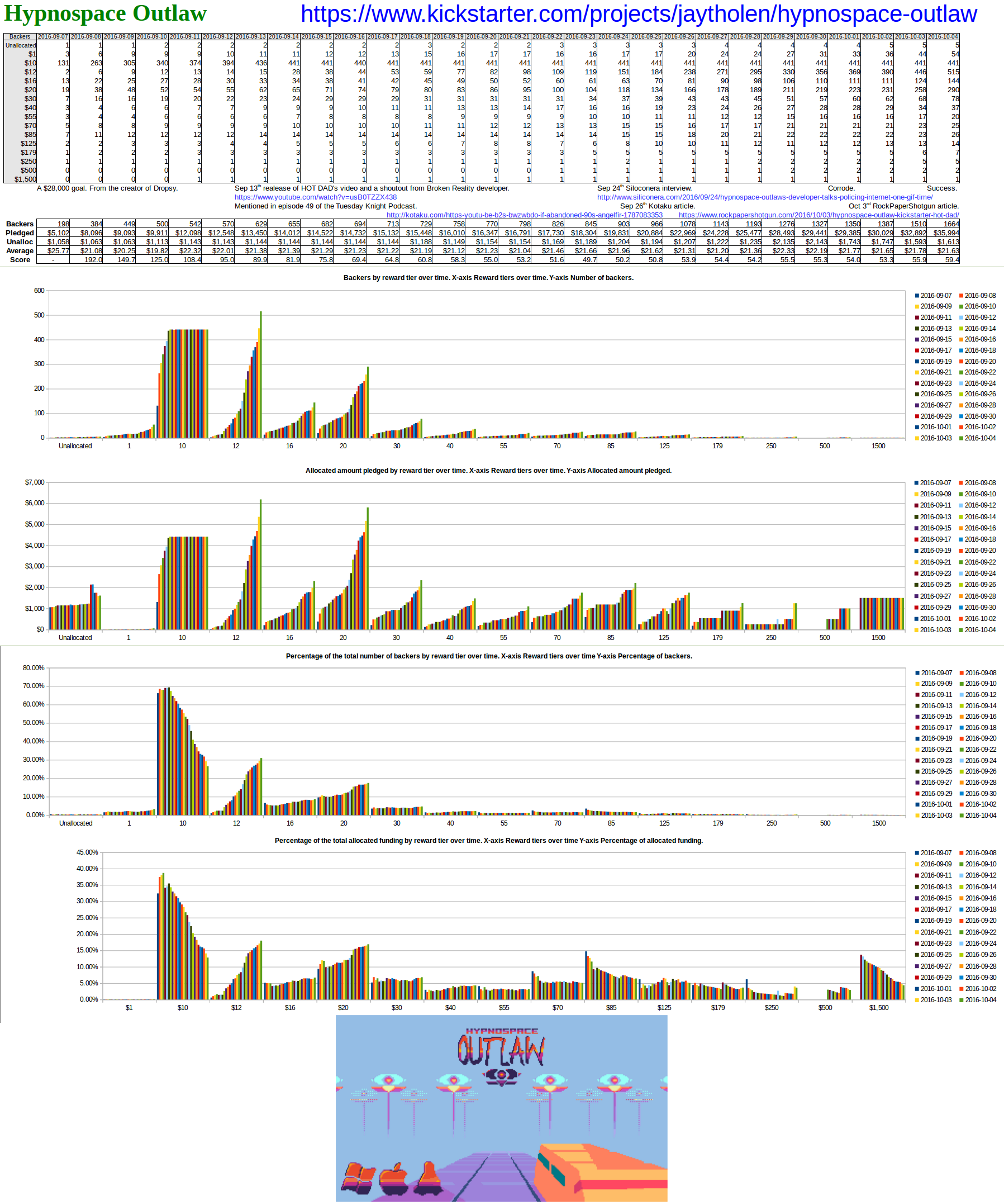Who in the world is Lobster Sundew? Lobster, otherwise known as Ian Kragh, is one of the most prolific miners of Kickstarter video game data around. Read almost any Kickstarter thread in a video game forum and you’ll most likely seem him chime in with a mind blowing amount of data, analysis, and commentary. Invaluable for developers, and deeply interesting for backers, Lobster’s insights are a must-read for anyone involved in the crowdfunding community. Fortunately for us Lobster has agreed to let us share his postings in a more public setting. A word of warning though, there’s a lot of information on a variety of campaigns and funding concepts in Lobster’s Kickstarter Analysis, so take your time and don’t be afraid to ask questions in the comments.
Throne of Lies went from $733 in un-allocated funds up to $4,544 (a $3,811 increase).
Breakfast Cult lost one of its largest backers.
Women of Xal lost one of its bigger backers.
The Dream Cube went from a near-dead campaign to suddenly, and quite mysteriously, 100% funded.
Legrand Legacy
Here are updated graphs for Legrand Legacy.
The average pledge metric has stayed around £44 per backer. It would take 910 backers at £44 per backer to reach a £40,000 goal. There is currently a total of 861 backers. (which is has since since achieved)
The first attempt had 769 backers. The second attempt surpassed that total on February 2nd.
The £3,000 tier is contributing 7.85% of the total raised. The £800 tier is 14.65% of the allocated funding.
14.86% of the total amount pledged is unallocated, but the way it has gradually accumulated over time it isn’t from huge mysterious backers. The £80 early-bird introduces the physical copy, but to ship to Canada would also require an extra £30. The unallocated funding in this case is likely to be from shipping.
A problematic backer has an account created in February 2017. Information fields like location and biography are empty. His comments about wanting a Nendoroid-style figure are strange. He goes off talking about if the figure will have moving parts, wondering what materials. He also backed a Vincent Van Gogh action figure project and asked if his name could be engraved on his. The campaign was less than £3,000 away from 100% funded before the troll pulled his pledge. It is currently £1,766 away from 100% thanks to progress on February 12th.
Kicktraq shows a trend to £45,555 (113%). BackerTracker shows £42,408 (106%). There are about 3 days remaining. The campaign is scheduled to end on Friday February 17th at 1pm PST. Legrand Legacy is holding the 14th rank in popularity of the category. I don’t expect it to drop out of the top 20 before it ends.
Bitly shows 1,026 clicks of the project shortlink. Most of these were on January 20th, January 25th and February 3rd.
YouTube playthroughs of the demo were mostly going up 2 to 3 weeks ago. That is also where most of the second attempt’s coverage is concentrated. A search for press over the last 7 days had few results.
It looks like the campaign is depending on social media and organic discovery on Kickstarter. There is a noticeable lack of press for the relaunch.
The start date was Wednesday January 18th. The end of the previous campaign was December 16th. The relaunch was relatively soon enough that some bloggers would not cover it twice.
There have been 16 project updates. That is good.
The Gwenelle Forest in project update #15 for Legrand Legacy has what looks like a carnivorous Sarracenia purpea in a tree. I used to have some of those until a rodent ate them while they were wintering.
I lost all my Venus Flytraps to the same rodent as they were wintering in the same pots. The rodent chewed through a plastic clothing hamper’s mesh to get to them.
December 14th was when the previous attempt had a Thunderclap.
Leveraging Existing Backers
A way to tap into existing backers for more funds is traditionally adding add-on rewards. Another option is new reward tiers. Yet another option is doing deals where “backers who upgrade their pledge at least X amount get Y”, but a lot of that type of promotion needs to be done manually so it is time intensive. I remember Anomalisa had backers who upgraded a minimum amount received a t-shirt.
Adding new reward tier content this late in a campaign can be risky.
Deals where backers get more by referring the project to a friend and successfully getting said friend to become a backer has been done in the past for physical gadget campaigns. The backer survey would ask who referred them.
Some large projects had sponsorship deals. A flight simulator flightstick manufacturer gave Strike Suit Zero sticks to give away to backers who pledged at a specific tier. Descent Underground had AMD give them a few graphics cards to give as reward content at a new tier.
Early. Steady. Successful.
Pixel Princess Blitz has steady percentages.
Another good example is ICU.
With traditional dice, 7 has the greatest chance of being rolled. That is why in board games like Settlers of Catan there are special rules when 7s are rolled. (The thief piece moves in Catan). Take a look at the probability distribution for 2 standard dice.
Now when looking at the 3rd graph in the infographs, realize it can serve as a probability distribution. For ICU 25% of the time the $25 tier was being picked. Once you give a mathematician a probability distribution, there are many tricks that can be done. One of the reasons to track the launch of a campaign in small increments is to get that distribution.
The 3rd graph for Pixel Princess Blitz’s launch day can be compared to the 3rd graph for when the campaign was over. See the similarities.
The 3rd graph about what percentage of backers is at different reward tiers is actually one of the most powerful for seeing if something is wrong. By tracking the first day in small increments, I do not have to wait for days later into the campaign to see if the distribution is good or bad. If I can see if it is good or bad, I can then look into how to fix the reward tiers.
Thanks to the Law of Averages, I can use the 3rd graph to help estimate how many backers a project needs to reach 100% funded.
There is a “population” of potential backers on Kickstarter. The idea is that of those potential backers, a specific percentage are going to pick the $15 tier for a campaign. Another percentage will pick the $20. For a $15 tier the percentage might be 50%. For a $10,000 tier there might be 0.001% of the population of potential backers that would consider picking it.
Now the stability in the 3rd graph can be upset. How? By adding reward tiers or eliminating tiers like closing an early-bird tier.
Once an early-bird is filled, it will gradually have its percentage of the total backers decline. The non-early-bird tier will also see an increase of its percentage.
With the probability distribution and some knowledge like knowing the cap for an early-bird tier, it is possible to have a rough idea what the campaign will look like at 100% funded.
Like how many backers at a $50 tier when the campaign is 100% funded.
Pre-Campaign Success
After accumulating enough data, this rough idea can even be made before a campaign launches. This significantly helps with pre-launch planning.
Multiple scenarios are considered. What if 60% pick a $15 tier? What if 75% of backers pick the $15 tier? The rewards structure can be optimized. It is like gradually molding clay.
One of the main objectives is determining how much traction a campaign needs to tip towards a better than 50% chance of success. Other techniques are used to estimate how much exposure or pre-launch following will be needed. Many project creators are failing on Kickstarter because they are not launching with enough traction. A project creator might need 200 backers in the first 48 hours, but only achieves 50 backers. Post-mortems keep warning developers to put effort into building up a pre-launch social media following.
The Art of War has a concept of only engaging in battles you know you can win. It is a strategy to avoid losing. You do not attack until you have a significant advantage because it is easier to defend than to attack. Many great battles are in essence won before the battle even starts. The side with greater numbers, better weapons or better supply lines can crush the other side. A well-executed Kickstarter campaign is effectively a victory achieved before the campaign launched.
The developer of Yandere Simulator has announced he plans to run a Kickstarter campaign soon. This is an example of a game that has effectively already won its crowdfunding battle before even launching. The developer has built up such a strong following already that it should easily smash any reasonably-sized funding goal. Even if the reward tiers result in an inefficient campaign for raising funds, it could still raise a large amount of funds thanks to the brute force of simply having so many followers.
When famous developers launch on Kickstarter, they benefit from years of accumulating fans of their past games. Now there are many discussions in the indie dev community about how hard building up a following can be. However, games with different levels of scope require different sized pre-launch followings.
Having Backers Ready
One way to look at this problem of needing to accumulate pre-launch backers is not to change the size of your following, but to change the size of the following your game needs to aim for. A tiny fun little game that can be produced on a small budget may need far fewer pre-launch followers than a game that is trying to be the next World of Warcraft. By setting out on a quest to create their dream games, many developers are aiming for games with a large scope. A large scope needs more funding. More funding needs more backers. More backers needs more marketing efforts.
Many project creators launch too soon. If they wished to succeed, they should have continued efforts to build up a fan base. The problem is many developers on Kickstarter do not have an idea how many backers they will need. An estimate for how many backers are needed to reach 100% funded can be extremely helpful in that regard. The probability distribution of past campaigns can help with making estimates and planning.
Over time there are observations, like the average pledge being twice to three times the price of the most populated tier. The cheapest tier for a copy of a game also is usually the most populated.
That it for this installment of Lobster’s Kickstarter List. Questions or comments? Chime in below.













Kudos to The LOBSTER!
Lobster’s a beast with data… I don’t think I even have 1/100th of his patience!
ToL dev here! Beastly analysis 🙂 Thanks for mentioning us with even a link! Our jump was from some relatives to the rescue https://uploads.disquscdn.com/images/f6c1bcaf5e490105cc8a5e20397aff29c372f575853348d8c8532db8374ae9be.png ~